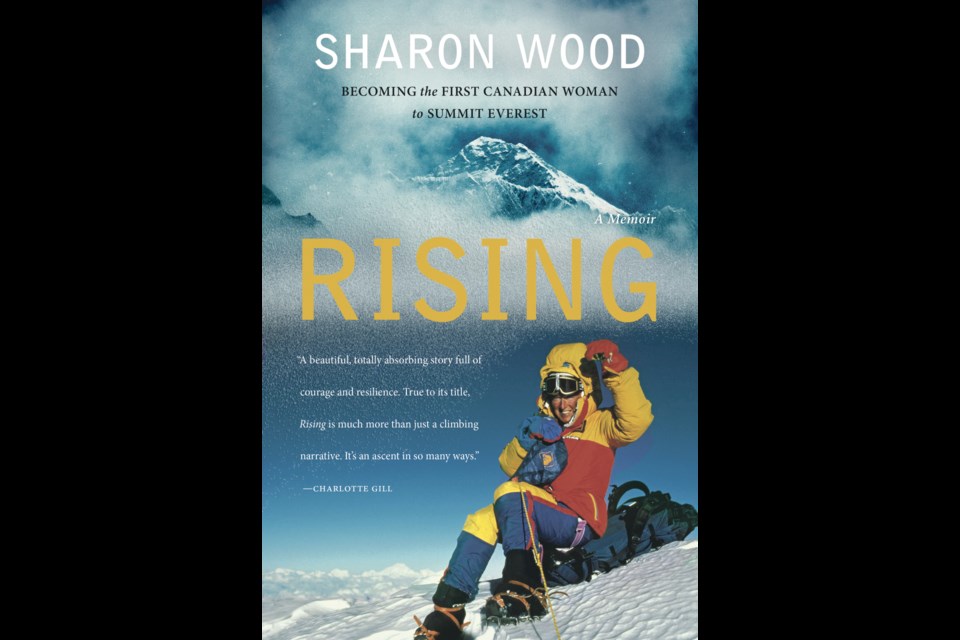It was a climb like no other.
A team of twelve, plus their cook, journeyed to Tibet to climb the world’s highest mountain. They set their sights high - to climb Everest not by the well-travelled (already in 1986) south side route by which thousands have now reached the summit, but by the rarely climbed West Ridge. No fewer than eight of the thirteen men who had previously attempted the mountain via this route had died trying.
And when this proficient team of Canadians succeeded by climbing a new route from the Rongbuk Glacier via the west shoulder and Hornbein Couloir – establishing a challenging and demanding route that remains unrepeated - they made history. But they did so not only by climbing their unique route, or because they ferried their own loads above basecamp without Sherpa support, but because one of their team members, Canmore’s Sharon Wood was the first North American woman to summit Everest, and the first woman from the Tibetan side.
The unwavering – but not always entirely smooth – teamwork, combined with the intense level of personal commitment essential to succeed on such a bold and dangerous undertaking is a central theme throughout Wood’s long-awaited memoir, Rising: How a Canadian Became the First North American Woman to Summit Everest, published by Douglas & McIntyre.
The first rule of memoir is that the author needs to have a compelling story to share. Check. Wood proves that in the first few pages, and then continually. Not only an unparalleled equal to her male climbing partners, swapping leads, sharing decisions and carrying the same weight, even as a teen she pushed boundaries with drugs and petty crimes, right through to parenthood when she co-founded a unique new school.
Another essential element of a good memoir is the author’s bravery and willingness to share not only her thoughts and feelings during her moments of triumph, but her darkest moments and lowest weaknesses and vulnerabilities. Check again. This, too, Wood accomplishes early in the book, describing the substantial emotional strain, when, with only about 40 people in the entire basecamp area of the mountain, she comes boot-to-boot with her former boyfriend who has accompanied his new girlfriend to a different base camp from where she, from the US, also hopes to become the first North American woman to stand on that coveted summit. And if living for months in the thin Himalayan air, lugging heavy packs up gruelling terrain all while trying to stay healthy and strong enough to be part of the ultimate summit push wasn’t challenging enough, Wood rose, under these trying circumstances. And, in writing that scene so sensitively, she rises again.
Grace.
It’s a quality that must be earned, just like climbing to Earth’s highest point carrying one’s own gear, leading up vertical cliffs above 8000 metres to set the rope necessary for a safe descent all at the brink of exhaustion.
As she did through her climbing career, Wood exhibits honesty as she unflinchingly yet delicately reveals herself on the pages as a strong, competent, imperfect person who grows through experiences shared with exemplary teammates.
This element is key to the story, because she admits her success thrust her alone into the spotlight. Writing of how she spent the next three decades learning to balance her fame, her need for privacy, her love and responsibilities toward her family and her conflicted feelings about her speaking career, she succeeds in painting that main character in her life, Everest, as both blessing and burden, and ultimately as mentor and companion.
But it’s through facing and embracing such challenges that Wood shines, as a climber and a writer.
Her every sentence is precisely constructed, but with sureness and competence and never stiff or forced, just as her every foot and hand placement had to be on her solo climb of Tocllaraju in the Peruvian Andes via the steep, technical West Face, which she painstakingly – and unbelievably - downclimbed after realizing her plan to walk off was too dangerous and she didn’t have enough rope to rappel. That sweaty-palm-inducing scene alone earns her a place among the most compelling climbing memoirs.
Her skillful use of dialogue though, combined with her development of teammates’ characters is exceptional. Add to that, from a 2019 perspective, it’s refreshing to follow the team on the long and taxing ascent via an unfamiliar route. It’s captivating to become immersed in the isolation of the uncrowded mountain with teammates communicating by radio between camps, and the inescapable periods of silence. It’s uncomfortable to read of her waking up in a tent inside a crevasse shoved full of snow shrinking the cave smaller, and to learn this dangerous discomfort is her happy place. It’s compelling to read of the hazy exhaustion of mind and body she experienced from the minute she left the tent on summit day, knowing she had to and could really only look after herself as she and her teammate, Dwayne Congdon pushed themselves beyond their limits. It’s exciting to read her authentic voice, and her strong, polished storytelling skills.
And it’s delightful to read an author who celebrates knowing she hasn’t got all the answers, only a willingness and fearlessness to seek and embrace the exploration.
Wood will read from Rising: How a Canadian Became the First North American Woman to Summit Everest at the Canmore Public Library on Dec. 10, and at Shelf Life Books in Calgary on Sept. 22 at 2 p.m. She will also present her book at the Banff Mountain Book Festival on Thursday, Oct. 31 at the Banff Centre’s Eric Harvie Theatre at 7:30 p.m. For tickets go to www.banffcentre.ca.




